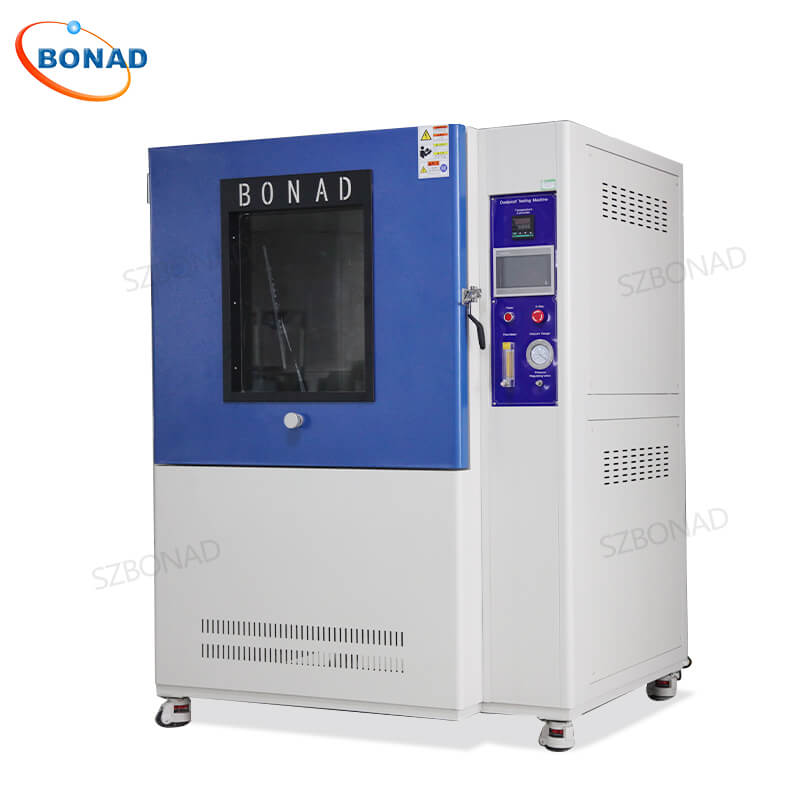Ingress protection (IP) testing evaluates the level of defense an enclosure provides against various types of intrusions, including water and solid particles. Among these, dust ingress testing is a critical component. Specialized laboratories use calibrated materials to conduct these tests, ensuring accuracy and consistency.
The IP Code specifies the degree of dust protection, denoted by two numbers. The first number indicates protection from solids, while the second number signifies protection from liquids.
For dust ingress testing, the relevant IP Codes are IP5X and IP6X. The “X” in these codes can range from zero to nine, representing varying levels of water resistance. An enclosure with a first number of 5 offers dust protection, while a first number of 6 indicates a dust-tight seal.
IP5X: Dust Protected Enclosures
According to IEC 60529, an enclosure rated as IP5X is considered dust protected. This means that while some dust may enter the enclosure, it will not be in sufficient quantities to interfere with the equipment’s satisfactory operation. To achieve an IP5X rating, the equipment must undergo a rigorous assessment to ensure its functionality remains unaffected by minimal dust ingress.
IP6X: Dust Tight Enclosures
An enclosure with an IP6X rating is deemed dust tight, meaning no dust can penetrate it. Unlike the IP5X test, which requires an operational assessment post-exposure, the presence of any dust in an IP6X-rated enclosure is unacceptable. Thus, no additional evaluation is needed for this rating.
Testing Procedures for IP5X and IP6X
IP5X Testing:
- Test Setup: Place the product inside a test chamber.
- Dust Application: Fine dust particles are blown towards the product from different directions using a specialized distributor.
- Test Duration: The product is exposed to blowing dust for a specified period.
- Evaluation: Post-exposure, examine the product to check if any dust has penetrated and affected its performance.
IP6X Testing:
- Test Setup: Similar to IP5X testing, place the product inside a test chamber.
- Dust Application: Introduce a considerable amount of fine dust into the chamber, completely surrounding the product.
- Test Duration: The exposure period is usually longer than that for IP5X testing.
- Evaluation: After exposure, thoroughly inspect the product to determine if any dust has entered and caused damage or affected functionality.
Applications Requiring Dust Testing
Various products across industries require stringent dust testing:
- Military equipment often faces exposure to falling dirt and blowing sand.
- Mining and construction machinery operate in dusty environments.
- Medical devices and consumer electronics need protection against even minimal dust ingress to ensure proper functioning.
In severe cases, accumulated combustible dust can lead to explosions, creating hazardous conditions that must be mitigated through effective design and testing.
Comprehensive Dust and Water Resistance Evaluations
Enclosures are evaluated for their protection against both solid objects and liquids. For example:
- An enclosure rated as IP68 is both dust tight (first number 6) and resistant to immersion beyond one meter (second number 8).
- Another example is an enclosure rated as IP67; it is also dust tight but only resistant to immersion up to one meter.
Professional IP5X IP6X anti-sand and dust test chamber:
IEC60529 IP5X IP6X Sand and Dust Proof Test Chamber
The outer layer of the sand and dust proof test chamber is made of high-quality steel plate, which is not only beautiful but also resistant to dirt and corrosion. It is also equipped with an extra-large window for easy observation of the internal test conditions. There are also a variety of automatic settings, such as temperature control table and box door protection device, which ensure the safety of the operator while making the sand and dust proof test box more durable.

Below is a quick reference chart summarizing various combinations of solid object protection (first number) and water protection (second number):
| IP Rating | Degree of Protection Against Solid Foreign Objects | Degree of Protection Against Water |
|---|---|---|
| IP50 | Dust protected | Not protected |
| IP51 | Dust protected | Dripping water |
| IP52 | Dust protected | Dripping water when tilted up to 15° |
| IP53 | Dust protected | Spraying water |
| IP54 | Dust protected | Splashing water |
| IP55 | Dust protected | Water jets |
| IP56 | Dust protected | Powerful water jets |
| IP57 | Dust protected | Immersion up to 1 m |
| IP58 | Dust protected | Immersion beyond 1 m |
| IP59 | Dust protected | High-pressure and temperature water jets |
| IP60 | Dust tight | Not protected |
| IP61 | Dust tight | Dripping water |
| IP62 | Dust tight | Dripping water when tilted up to 15° |
| IP63 | Dust tight | Spraying water |
| IP64 | Dust tight | Splashing water |
| IP65 | Dust tight | Water jets |
| IP66 | Dust tight | Powerful water jets |
| IP67 | Dust tight | Immersion up to 1 m |
| IP68 | Dust tight | Immersion beyond 1 m |
| IP69 | Dust tight | High-pressure and temperature water jets |
For detailed information on all possible ratings under IEC 60529 standards, refer to comprehensive charts available at specialized resources.


